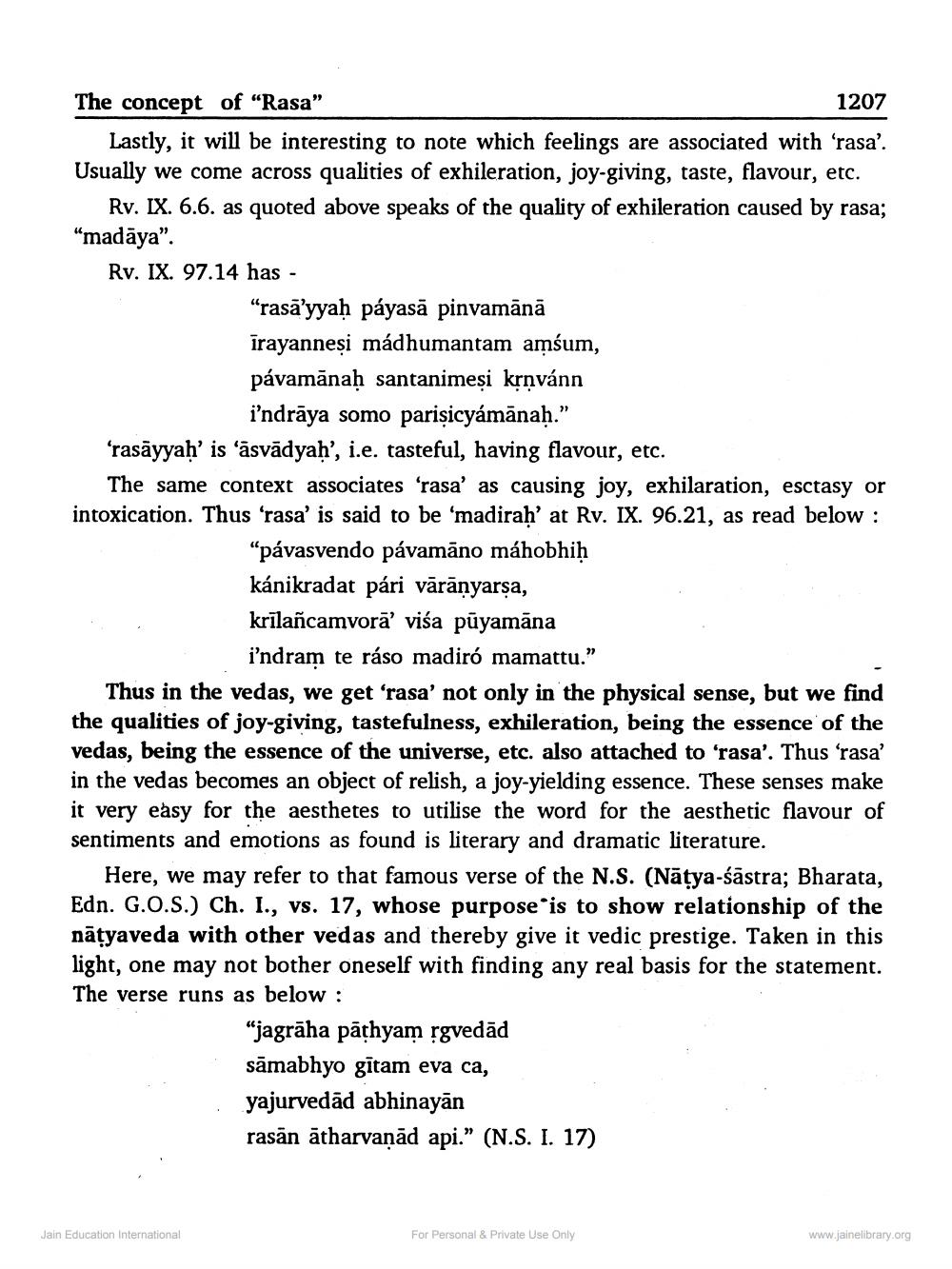________________
The concept of “Rasa”
1207 Lastly, it will be interesting to note which feelings are associated with 'rasa' Usually we come across qualities of exhileration, joy-giving, taste, flavour, etc.
Rv. IX. 6.6. as quoted above speaks of the quality of exhileration caused by rasa; “madāya". Rv. IX. 97.14 has -
“rasā’yyah payasā pinvamānā īrayanneși madhumantam amśum, pávamānaḥ santanimeși krņvánn
i'ndrāya somo parisicyámānah." ‘rasāyyaḥ' is 'āsvādyah', i.e. tasteful, having flavour, etc.
The same context associates 'rasa' as causing joy, exhilaration, esctasy or intoxication. Thus 'rasa' is said to be 'madirah' at Rv. IX. 96.21, as read below :
"pávasvendo pávamāno máhobhiḥ kánikradat pári vārānvarsa, krilañcamvorā visa pūyamāna
i'ndram te raso madiró mamattu.” Thus in the vedas, we get ‘rasa' not only in the physical sense, but we find the qualities of joy-giving, tastefulness, exhileration, being the essence of the vedas, being the essence of the universe, etc. also attached to 'rasa'. Thus 'rasa in the vedas becomes an object of relish, a joy-yielding essence. These senses make it very easy for the aesthetes to utilise the word for the aesthetic flavour of sentiments and emotions as found is literary and dramatic literature.
Here, we may refer to that famous verse of the N.S. (Nātya-śāstra; Bharata, Edn. G.O.S.) Ch. I., vs. 17, whose purpose is to show relationship of the nātyaveda with other vedas and thereby give it vedic prestige. Taken in this light, one may not bother oneself with finding any real basis for the statement. The verse runs as below:
“jagrāha pāțhyam rgvedād sāmabhyo gitam eva ca, yajurvedād abhinayān rasān ātharvaņād api.” (N.S. I. 17)
Jain Education International
For Personal & Private Use Only
www.jainelibrary.org




